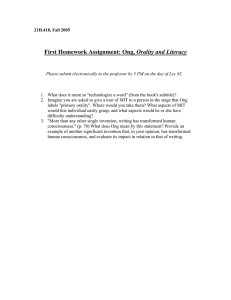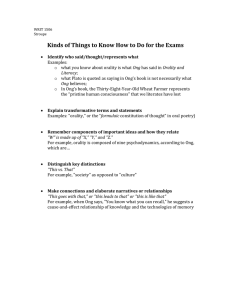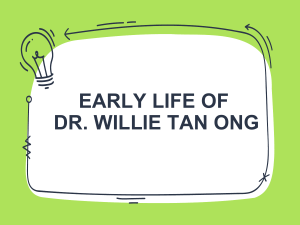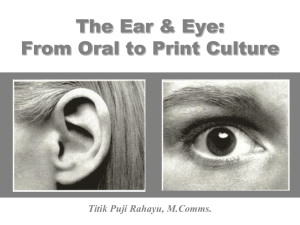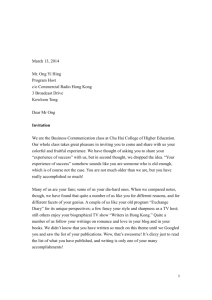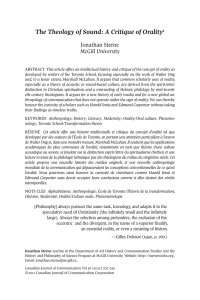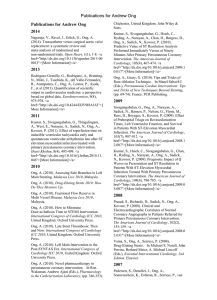Orality and Literacy, Chapter 3
advertisement
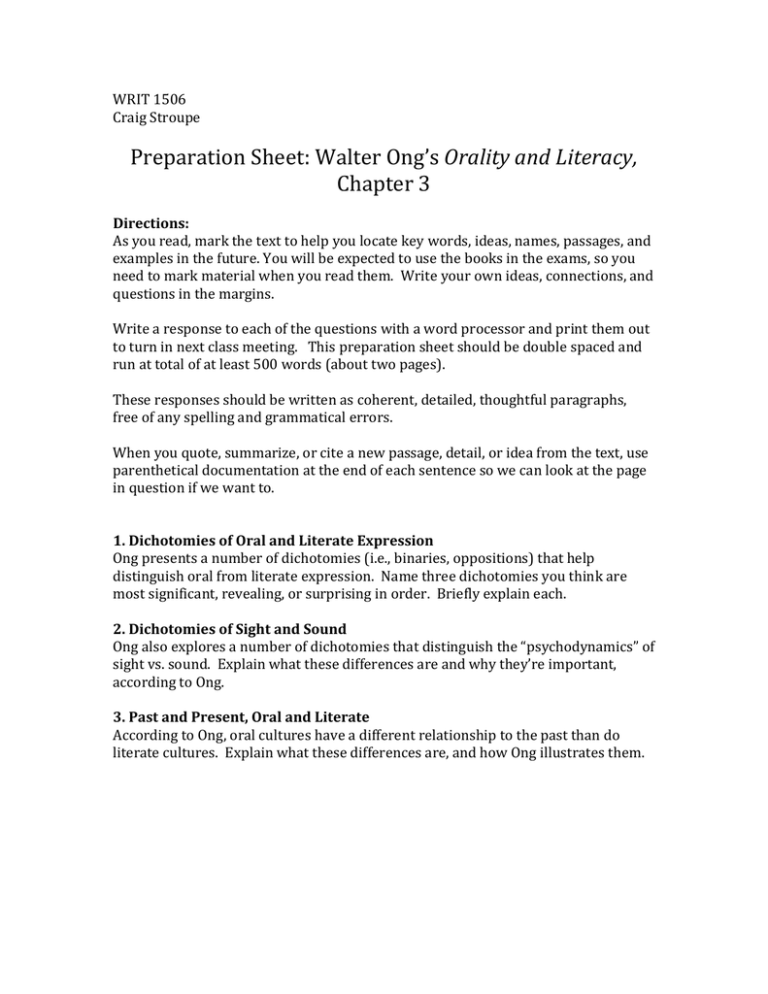
WRIT 1506 Craig Stroupe Preparation Sheet: Walter Ong’s Orality and Literacy, Chapter 3 Directions: As you read, mark the text to help you locate key words, ideas, names, passages, and examples in the future. You will be expected to use the books in the exams, so you need to mark material when you read them. Write your own ideas, connections, and questions in the margins. Write a response to each of the questions with a word processor and print them out to turn in next class meeting. This preparation sheet should be double spaced and run at total of at least 500 words (about two pages). These responses should be written as coherent, detailed, thoughtful paragraphs, free of any spelling and grammatical errors. When you quote, summarize, or cite a new passage, detail, or idea from the text, use parenthetical documentation at the end of each sentence so we can look at the page in question if we want to. 1. Dichotomies of Oral and Literate Expression Ong presents a number of dichotomies (i.e., binaries, oppositions) that help distinguish oral from literate expression. Name three dichotomies you think are most significant, revealing, or surprising in order. Briefly explain each. 2. Dichotomies of Sight and Sound Ong also explores a number of dichotomies that distinguish the “psychodynamics” of sight vs. sound. Explain what these differences are and why they’re important, according to Ong. 3. Past and Present, Oral and Literate According to Ong, oral cultures have a different relationship to the past than do literate cultures. Explain what these differences are, and how Ong illustrates them.
